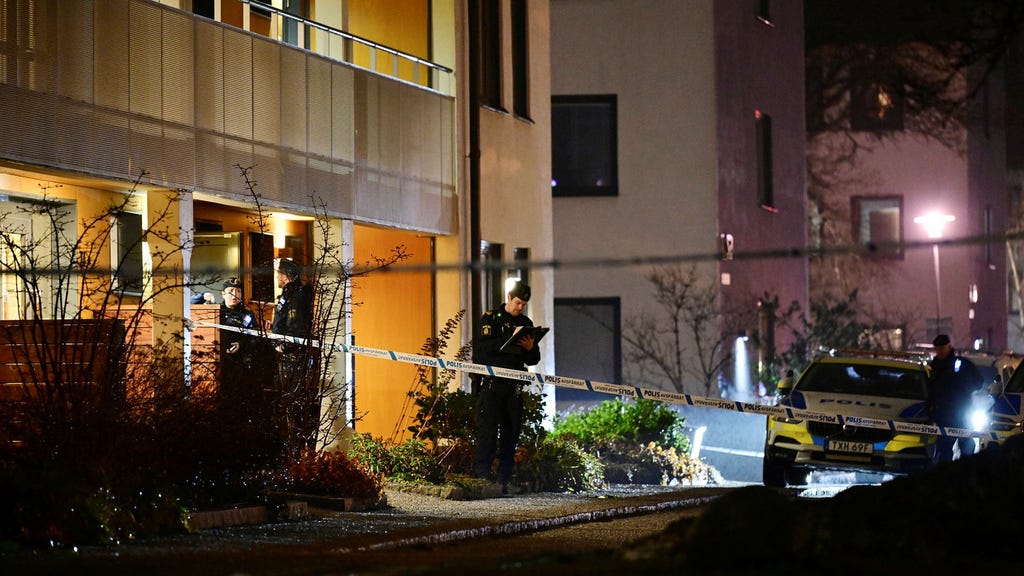The escalating crisis of explosions in Sweden: A stark contrast to declining shootings
While Sweden has witnessed a welcome decrease in shootings in the early months of the year, a far more alarming trend is emerging: a dramatic surge in explosions. This escalating crisis, marked by near-daily detonations across the country, paints a grim picture of escalating violence, particularly within criminal networks. The frequency of these incidents is rapidly approaching the record levels seen in late 2019, a period marked by unprecedented levels of explosive violence. The contrast between the declining shootings and the increasing explosions suggests a shift in tactics within criminal circles, a move towards more indiscriminate and potentially devastating methods of intimidation and violence.
Stockholm, a frequent epicenter of such violence, has again borne the brunt of these attacks. A recent explosion in Skärholmen, while thankfully causing no injuries, shattered windows and sent shockwaves through the community. This incident followed closely on the heels of a devastating explosion in Johanneshov, which injured two people and caused extensive damage to nearby apartment buildings. Other cities, including Gothenburg and Eskilstuna, have also been targeted, illustrating the widespread nature of this disturbing trend. These incidents, occurring in residential areas and near businesses, highlight the indiscriminate nature of the attacks and the growing risk to innocent bystanders.
The sheer number of explosions in the first weeks of the year is deeply concerning. With nearly 20 explosions recorded in just three weeks, the pace of violence is alarming. This surpasses the average monthly figures and puts Sweden on track to potentially exceed the alarmingly high numbers recorded in late 2019, when 22 explosions occurred in a single month. This rapid escalation demands immediate attention and highlights the urgent need for effective strategies to counter this growing threat.
Experts attribute this surge in explosive violence to heightened conflict within criminal networks. Pär Christianssén, head of the National Bomb Squad, has noted a disturbing shift in tactics. While previously, explosives were often placed outside buildings, there is a clear trend towards targeting locations closer to intended victims. This change, including placing devices inside apartment buildings, near doors, or even throwing grenades into homes, signifies a more reckless disregard for human life and significantly increases the risk of serious injury or death.
The types of explosives used are also evolving. While previously, criminals often used commercially available explosives like dynamite, increased security measures have made these materials more difficult to obtain. This has led to a shift towards readily available alternatives, primarily hand grenades and pyrotechnics. The prevalence of these types of explosives underscores the resourcefulness of criminal networks and their willingness to adapt their methods to achieve their objectives. The source of these hand grenades, often traced back to the Balkans, is under investigation, raising concerns about potential smuggling routes and the availability of these dangerous weapons within Sweden.
This wave of explosions represents a significant challenge to public safety and underscores the need for a comprehensive response. The escalating violence not only endangers lives and causes widespread property damage but also erodes public trust and creates a climate of fear. Addressing this crisis requires a multi-pronged approach, including enhanced intelligence gathering, stricter controls on the sale and distribution of explosive materials, and targeted interventions aimed at disrupting the activities of criminal networks. The stories of victims, like the family who lost their daughter in a bombing, serve as a stark reminder of the devastating human cost of this escalating violence. The financial burden, with the cost of just three explosions reaching 70 million kronor, further emphasizes the economic consequences of this crisis. A concerted effort from law enforcement, policymakers, and community leaders is crucial to reversing this dangerous trend and restoring safety and security for all citizens.














